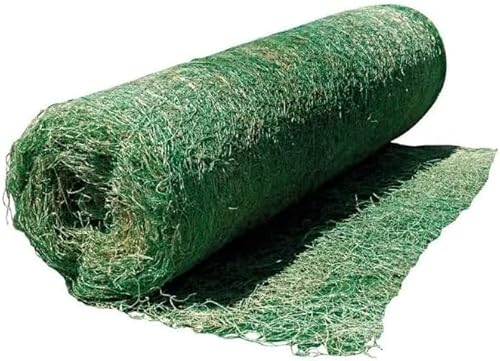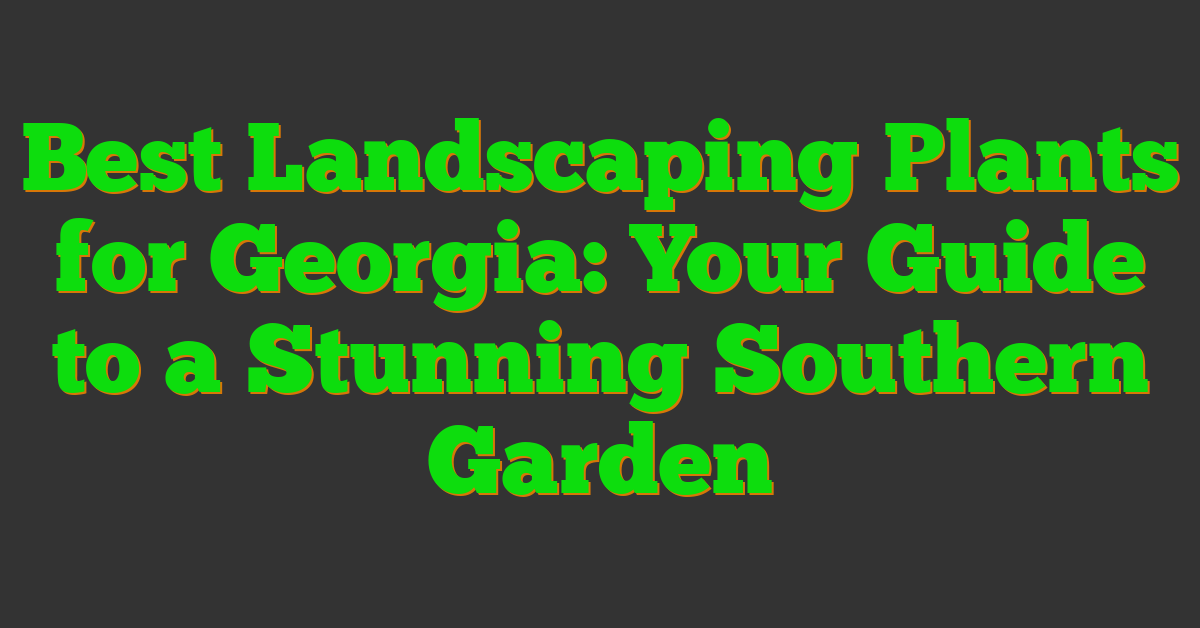Landscaping is a popular method of erosion control that has been used for centuries. It involves designing and maintaining outdoor spaces in a way that prevents soil erosion, which can cause significant damage to the environment and property. Landscaping can also enhance the aesthetic appeal of an area, making it a more desirable place to live, work, or visit.

Understanding Erosion and Its Impacts
Erosion is the process by which soil is washed away by water, wind, or other natural elements. It can occur naturally or as a result of human activities such as construction, deforestation, and agriculture. Erosion can have a range of negative impacts, including soil loss, nutrient depletion, water pollution, and property damage. Landscaping can play an important role in preventing erosion and mitigating its impacts.
The Role of Landscaping in Erosion Control
Landscaping can be an effective means of controlling erosion because it involves the strategic placement of plants, trees, and other elements to slow down or redirect the flow of water and wind. By creating a barrier of vegetation, for example, landscaping can help to prevent soil from being washed away. Additionally, landscaping can help to improve soil quality, which in turn can help to prevent erosion.
Key Takeaways
- Landscaping is an effective method of preventing soil erosion and enhancing the aesthetic appeal of an area.
- Erosion can have a range of negative impacts, including soil loss, nutrient depletion, water pollution, and property damage.
- Landscaping can play an important role in preventing erosion and mitigating its impacts by strategically placing plants, trees, and other elements to slow down or redirect the flow of water and wind.
Understanding Erosion and Its Impacts

https://www.youtube.com/watch?v=im4HVXMGI68&embed=true
Natural Processes and Human Activities
Erosion is a natural process that occurs when soil, rocks, and sediments are worn away and transported by natural forces such as rain and wind. However, human activities such as deforestation, overgrazing, and construction have accelerated soil erosion rates, making it a major environmental threat to sustainability and productivity.
Deforestation, for instance, exposes the soil to the direct impact of rain and wind, which can cause erosion by removing the vegetation cover that holds the soil in place. Similarly, overgrazing reduces vegetation cover, resulting in soil erosion, nutrient depletion, and loss of topsoil. Construction activities such as road building, mining, and urbanization can also lead to soil erosion by increasing runoff and sedimentation.
Consequences of Soil Erosion
Soil erosion has far-reaching consequences on the environment, economy, and society. It degrades soil quality, reduces soil fertility, and lowers agricultural productivity, leading to food insecurity and poverty. Soil erosion also affects water quality by increasing sedimentation in rivers and lakes, which can harm aquatic life and reduce water availability for human use.
Moreover, soil erosion contributes to climate change by releasing carbon dioxide into the atmosphere, reducing carbon sequestration, and altering the water cycle. Climate change, in turn, exacerbates soil erosion by increasing the frequency and intensity of extreme weather events such as floods and droughts.
In conclusion, erosion is a geological process that occurs naturally, but human activities have accelerated soil erosion rates, making it a major environmental threat to sustainability and productivity. Soil erosion has far-reaching consequences on the environment, economy, and society, and it is essential to implement erosion control measures to mitigate its impacts.
The Role of Landscaping in Erosion Control
https://www.youtube.com/watch?v=31ORj4iasNw&embed=true
Landscaping is an effective way to control erosion on your property. Whether you have a large yard or a small garden, there are various landscaping techniques that can help prevent soil erosion and protect your property from damage. In this section, we will discuss the types of landscaping techniques and the benefits of vegetation and ground cover.
Types of Landscaping Techniques
There are several types of landscaping techniques that can be used to control erosion. These include:
-
Terracing: This involves creating flat areas on a sloping landscape to slow down the flow of water and prevent soil erosion.
-
Retaining walls: These are structures that hold back soil and prevent it from eroding away.
-
Mulching: Applying a layer of mulch to the soil can help prevent erosion by reducing the impact of raindrops and slowing down the flow of water.
-
Planting: Planting vegetation such as grass, trees, and other plants can help hold the soil in place and prevent erosion. Native plants are particularly effective as they are adapted to local conditions and are more resilient.
Benefits of Vegetation and Ground Cover
Vegetation and ground cover play a vital role in controlling erosion. Grass, for example, has a deep root system that helps hold the soil in place and prevent erosion. Trees also play an essential role in erosion control as they help slow down the flow of water and reduce the impact of raindrops. Ground cover, such as mulch or gravel, can also be effective in preventing erosion by reducing the impact of raindrops and slowing down the flow of water.
In addition to preventing erosion, vegetation and ground cover offer several other benefits. They can help improve soil quality, reduce water runoff, and provide habitat for wildlife. Landscaping with native plants can also help support biodiversity by providing food and habitat for pollinators and other wildlife.
In conclusion, landscaping is an effective way to control erosion on your property. By using techniques such as terracing, retaining walls, mulching, and planting vegetation, you can help prevent soil erosion and protect your property from damage. Vegetation and ground cover also play a vital role in erosion control and offer several other benefits, including improving soil quality and supporting biodiversity.
Landscaping Elements for Erosion Prevention
https://www.youtube.com/watch?v=Myj4VMssSmQ&embed=true
If you are experiencing erosion problems, landscaping can be a great solution to prevent further damage. Here are some elements of landscaping that can help you prevent erosion:
Retaining Walls and Structures
Retaining walls and structures can be used to hold back soil and prevent it from washing away. They can be made from various materials such as wood, rocks, and stones. Retaining walls can also be used to create terraces, which can help slow down water runoff and erosion.
Mulching and Soil Amendments
Mulching and soil amendments can help prevent erosion by reducing soil compaction and increasing water absorption. Mulch can be made from various materials such as wood chips, leaves, and straw. Soil amendments such as compost and manure can also be added to the soil to increase its ability to absorb water and nutrients.
Strategic Planting and Garden Design
Strategic planting and garden design can also help prevent erosion. Plants with deep roots can help hold soil in place, while plants with shallow roots can help absorb water and prevent runoff. Garden design can also be used to create natural barriers that slow down water runoff and prevent erosion.
In addition to these elements, erosion control blankets and fabric can also be used to prevent erosion. These materials are placed over the soil and help hold it in place while allowing water and air to penetrate.
By incorporating these elements into your landscaping, you can effectively prevent erosion and protect your property from further damage.
Water Management and Drainage Solutions
https://www.youtube.com/watch?v=abqrYbdrgYg&embed=true
« What Kind of Landscaping Keeps Snakes Away: Tips and Tricks Do You Need a Landscaping License in Florida? A Quick Guide to Licensing Requirements »
When it comes to erosion control, water management and drainage solutions are crucial. By controlling runoff and water flow, you can prevent soil erosion and damage to your property. There are several landscaping techniques that can be used to manage water and prevent erosion.
Controlling Runoff and Water Flow
One of the most effective ways to control runoff and water flow is by using rain gardens and swales. Rain gardens are designed to collect and absorb rainwater, while swales are shallow ditches that are used to redirect water away from your property. By using these techniques, you can prevent water from pooling and causing damage to your property.
Rain Gardens and Swales
Rain gardens and swales are both effective ways to manage water and prevent erosion. Rain gardens are designed to collect and absorb rainwater, while swales are shallow ditches that are used to redirect water away from your property. By using these techniques, you can prevent water from pooling and causing damage to your property.
French Drains and Irrigation Systems
French drains and irrigation systems are also effective ways to manage water and prevent erosion. French drains are perforated pipes that are used to redirect water away from your property, while irrigation systems are used to supply water to your landscaping. By using these techniques, you can prevent water from pooling and causing damage to your property.
Overall, there are several landscaping techniques that can be used to manage water and prevent erosion. By using rain gardens, swales, French drains, and irrigation systems, you can prevent water from pooling and causing damage to your property.
Materials and Techniques for Stabilization
https://www.youtube.com/watch?v=rx529wwOdNg&embed=true
When it comes to landscaping for erosion control, there are a variety of materials and techniques that can be used to stabilize soil and prevent erosion.
Using Rocks, Stones, and Geotextiles
One popular method for erosion control is using rocks and stones. These materials can be used to create retaining walls, terraces, and other structures that help to stabilize soil and prevent erosion. Geotextiles, which are synthetic fabrics designed to stabilize soil, can also be used in conjunction with rocks and stones to create a more effective erosion control system.
Another option is to use sandbags, silt fences, and mats made from natural fibers such as jute or coconut. These materials can be used to create barriers that slow down the flow of water and prevent soil from being washed away.
Biodegradable and Synthetic Options
In addition to natural materials, there are also a number of biodegradable and synthetic options that can be used for erosion control. Biodegradable erosion control blankets, for example, are made from natural fibers and can be used to stabilize soil on slopes and other areas prone to erosion. These blankets gradually break down over time, providing nutrients to the soil and promoting the growth of vegetation.
Synthetic erosion control materials, such as plastic netting and geotextiles, are also available. These materials are designed to be durable and long-lasting, providing effective erosion control for many years. However, they are not biodegradable and can have negative environmental impacts if not properly disposed of.
Overall, the best option for erosion control will depend on a variety of factors, including the slope of the land, the type of soil, and the amount of rainfall in the area. By working with a professional landscaping company, you can determine the best materials and techniques for your specific needs and ensure that your property is protected from erosion for years to come.
Environmental Considerations and Best Practices
Landscaping is an effective way to control erosion, but it is important to consider the environmental impact of your landscaping choices. By following best practices, you can minimize chemical usage, promote biodiversity, and enhance natural beauty.
Minimizing Chemical Usage
When landscaping for erosion control, it is important to minimize the use of pesticides and herbicides. These chemicals can be harmful to both the environment and human health. Instead, consider using natural methods of pest and weed control, such as companion planting, mulching, and hand weeding.
In addition to reducing chemical usage, it is important to choose plants that are well-suited to your soil and climate. Native plants are often the best choice, as they are adapted to local conditions and require less maintenance. By choosing the right plants, you can create a healthy and sustainable landscape that is resistant to erosion.
Promoting Biodiversity and Natural Beauty
In addition to controlling erosion, landscaping can also promote biodiversity and enhance natural beauty. By choosing a variety of plants, you can create a diverse ecosystem that supports a range of wildlife. In addition, landscaping can be used to create aesthetically pleasing outdoor spaces that are enjoyable for both you and your community.
When choosing plants for your erosion control landscaping, consider factors such as color, texture, and shape. By selecting a variety of plants with different characteristics, you can create a visually appealing landscape that is also functional. In addition, consider incorporating features such as water features, rock gardens, and other natural elements to enhance the beauty of your landscape.
By following these best practices, you can create an effective and environmentally friendly erosion control landscaping plan. With careful planning and attention to detail, you can create a beautiful and sustainable landscape that will benefit both you and the environment.
Challenges and Maintenance in Erosion Control Landscaping
https://www.youtube.com/watch?v=Kdm-Z-_AGnU&embed=true
Landscaping is a popular method to combat soil erosion, but it comes with its own set of challenges and maintenance requirements. Here are some of the challenges you may face when using landscaping for erosion control, and how to maintain your landscaping to ensure it continues to be effective.
Dealing with Extreme Weather and Flooding
One of the biggest challenges of using landscaping for erosion control is dealing with extreme weather and flooding. Heavy rain, for example, can quickly wash away soil and plant material, undoing all your hard work. To combat this, it’s important to choose plants that are well-suited to your climate and soil type. You may also want to consider using mulch or other ground cover to help hold the soil in place during heavy rains.
Ongoing Maintenance and Care
Another challenge of using landscaping for erosion control is ongoing maintenance and care. Landscaping requires regular upkeep to remain effective, including watering, pruning, and weeding. You may also need to replace plants that die or become damaged, and monitor your landscaping for signs of erosion or other issues.
To reduce maintenance costs, it’s important to choose plants that are well-suited to your climate and soil type, and to design your landscaping in a way that minimizes the need for watering and other maintenance. You may also want to consider using native plants, which are often better adapted to local conditions and require less maintenance.
Poor land management and human activities such as development can also contribute to erosion, making it even more important to maintain your landscaping on an ongoing basis. By taking care of your landscaping and choosing the right plants for your climate and soil type, you can help prevent erosion and protect your property from damage.
Frequently Asked Questions
https://www.youtube.com/watch?v=BhHqm6xRoeQ&embed=true
How does the strategic placement of rocks on slopes combat erosion?
Strategically placing rocks on slopes can help combat erosion by breaking the flow of water and slowing it down. The rocks act as a barrier and reduce the velocity of water, allowing it to infiltrate the soil and reducing the amount of runoff. This is particularly effective on slopes and hillsides where erosion is a common problem. Additionally, rocks can help stabilize the soil and prevent it from being washed away by heavy rainfall.
In what ways can landscape design contribute to preventing soil erosion?
Landscape design can contribute to preventing soil erosion in several ways. For example, planting ground cover plants in areas that are prone to erosion can help hold the soil in place and prevent it from being washed away. Additionally, designing a landscape with a variety of plants can help reduce erosion by increasing the amount of organic matter in the soil, which improves its structure and water-holding capacity. Landscape design can also incorporate features such as retaining walls, terraces, and swales to help slow down the flow of water and prevent erosion.
What are the benefits of using erosion control blankets in landscaping?
Erosion control blankets are a type of landscape fabric that can be used to stabilize soil and prevent erosion. They are made from biodegradable materials such as coconut fiber or straw and are designed to be placed over the soil to protect it from erosion. The blankets help to retain moisture in the soil, encourage the growth of vegetation, and protect the soil from wind and water erosion. They are particularly effective on steep slopes and hillsides where erosion is a common problem.
How effective is landscape fabric in protecting against soil erosion?
Landscape fabric can be effective in protecting against soil erosion when used in combination with other erosion control measures such as mulching and planting. It is designed to be placed over the soil to prevent weeds from growing and to protect the soil from erosion. However, landscape fabric can also prevent water from penetrating the soil, which can lead to soil compaction and reduced soil health. Therefore, it is important to use landscape fabric judiciously and in combination with other erosion control measures.
Are there specific plants that help in stabilizing soil and reducing erosion?
Yes, there are several plants that can help stabilize soil and reduce erosion. Ground cover plants such as creeping phlox, creeping juniper, and creeping thyme are effective at holding soil in place and preventing it from being washed away. Additionally, deep-rooted plants such as prairie grasses and wildflowers can help stabilize soil and improve its structure. Trees and shrubs can also be effective at reducing erosion by providing a windbreak and stabilizing the soil with their roots.
What role do erosion control wattles play in maintaining landscape integrity?
Erosion control wattles are manmade fiber tubes that are filled with compressed straw or other materials. They are designed to be placed on slopes and hillsides to slow down the flow of water and prevent erosion. The wattles act as a barrier and reduce the velocity of water, allowing it to infiltrate the soil and reducing the amount of runoff. Additionally, the wattles can help stabilize the soil and prevent it from being washed away by heavy rainfall. They are particularly effective in areas where erosion is a common problem and can help maintain the integrity of the landscape.
















